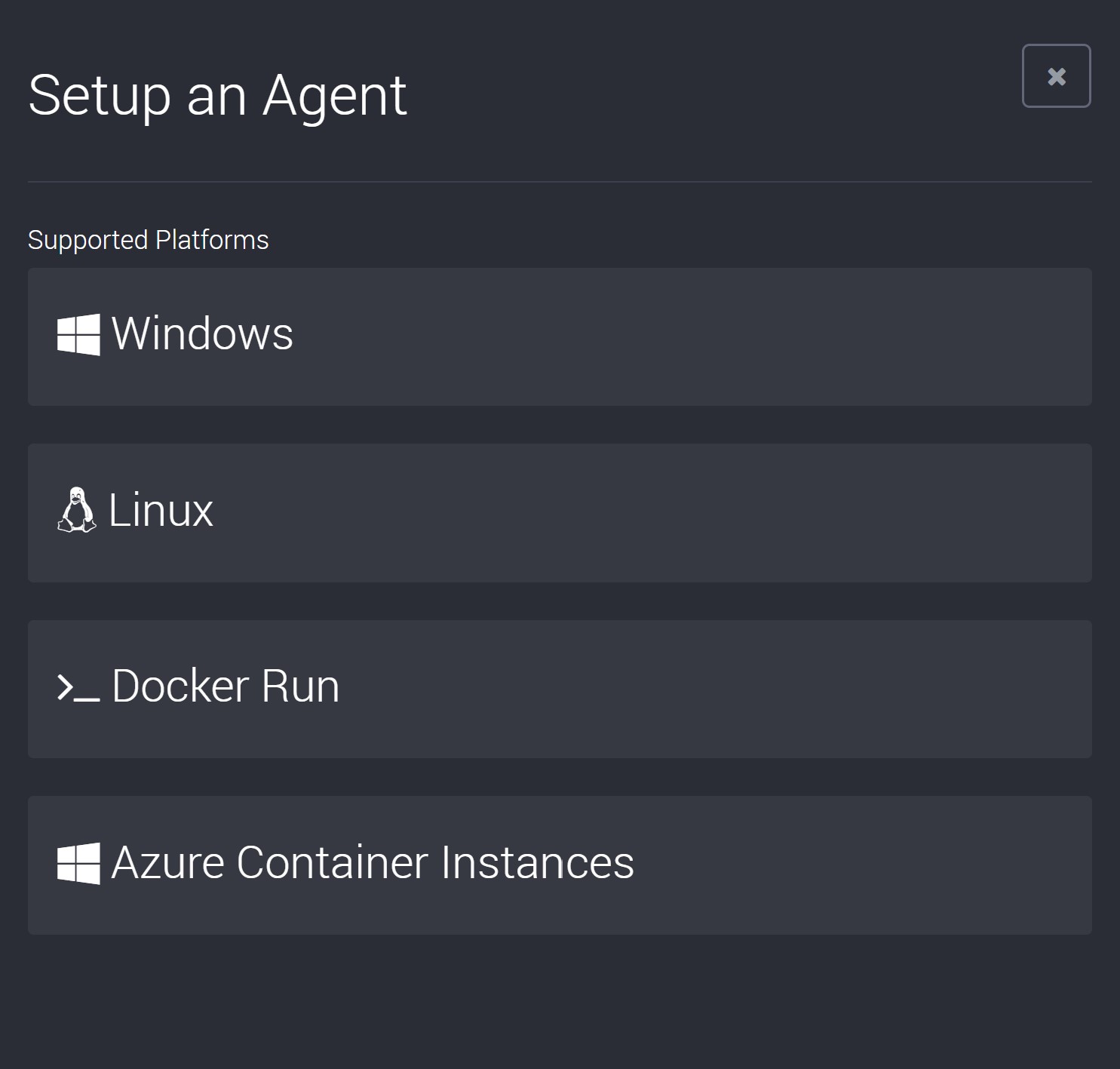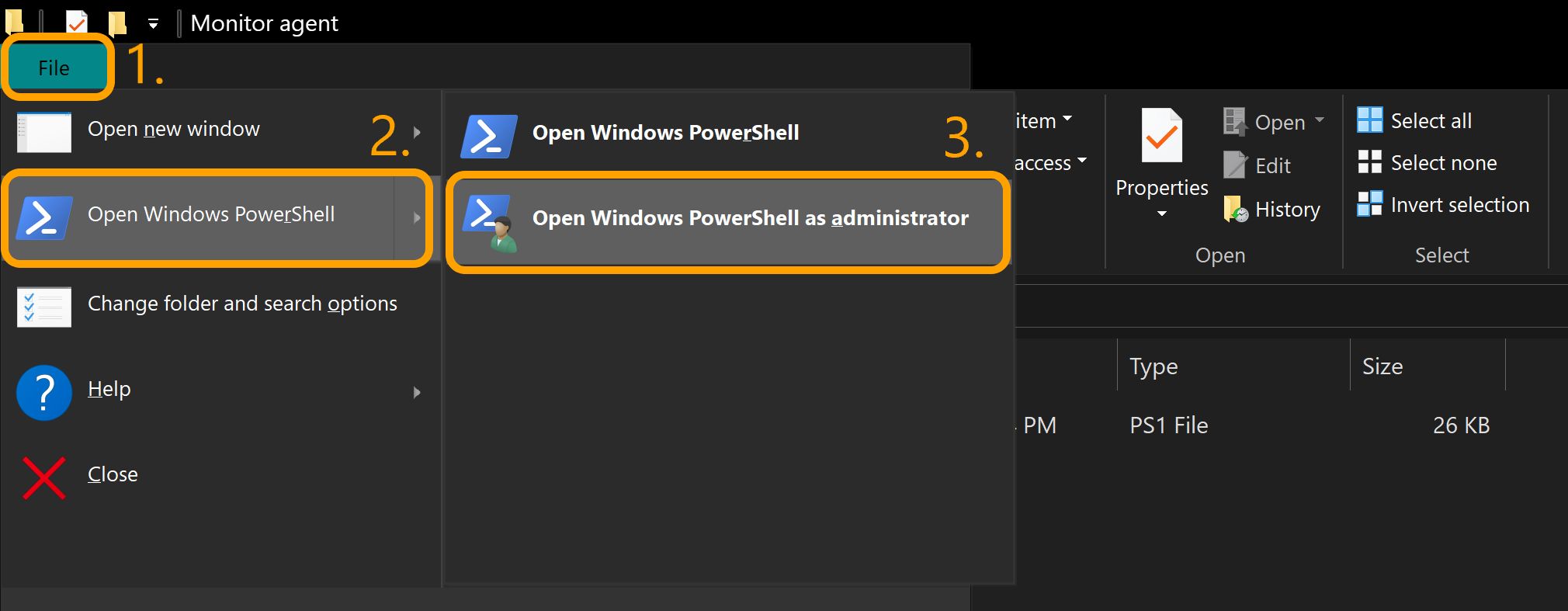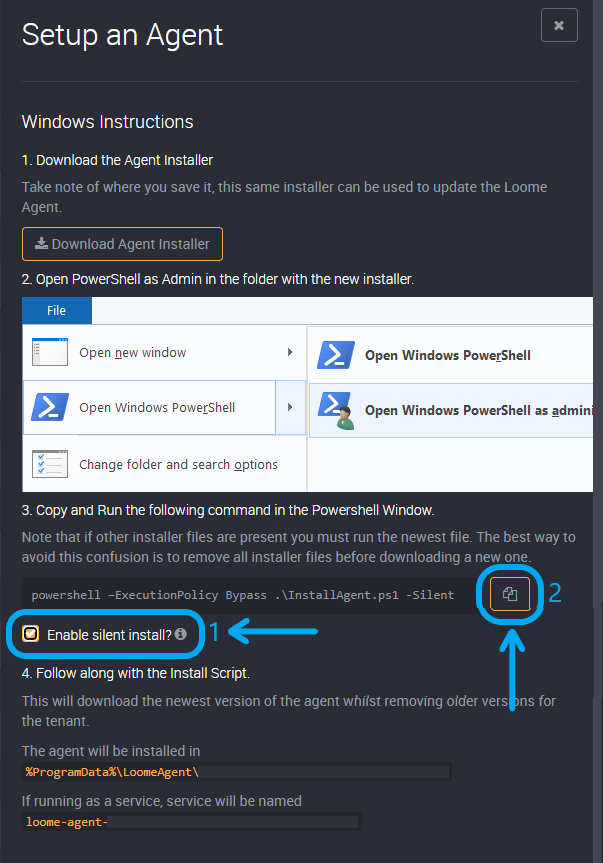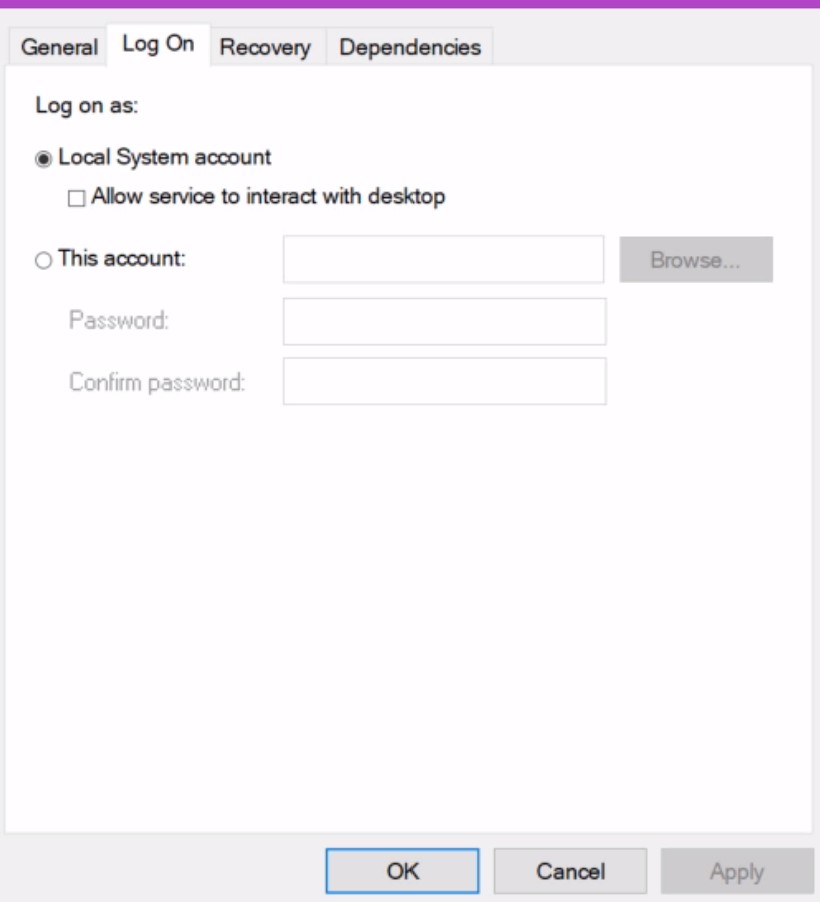Installing the Agent in Windows and Linux
To add an agent you will have to download and run the Loome agent installer for your platform of Windows, Linux, Docker Run or Azure Container instances.
Click on Agents in the top-right drop down.

Click on Setup Agent.

This will expand the slide-out where you can select your platform. Choose from Windows, Linux, Docker Run or Azure Container instances.

Once you have selected your platform, you will be shown a list of steps. In Windows and Linux, you will need to first download your agent.
Step 1: Download Installer for Windows or Linux
The agent installer is a single Powershell Script that will download the necessary run times, the newest version of the agent and it will also pre-configure your agent to connect to this tenant.
The install script will automatically be installed as a Local System account. To change the account settings, you will need to modify the service.
Once you’ve downloaded the script, make sure to run the script with administrator privileges.
Windows users will need to ensure they have Powershell 4 at a minimum installed.
Linux users will need to install Powershell Core for their platform.
Follow the next steps to install in Windows. Skip ahead to Linux here.
Install in Windows
Open PowerShell as an Administrator in the folder that contains the new Loome agent installer.


Copy and run the following command in this PowerShell Window.
If other Loome agent installer files are present in this folder, you must run the newest file. The best way to avoid any confusion is to remove all installer files before downloading a new agent.
powershell –ExecutionPolicy Bypass .\InstallAgent.ps1

You can also use the script with the silent install option. It will proceed with the agent installation selecting the default options for the prompts. It will choose “Y” for confirming the installation of the agent, “N” for installing SnowSQL(for use with Snowflake Cloud Data Warehouse), and “N” for using Microsoft Genomics.
To use silent install, select the checkbox beneath the install script.
Copy the script and paste it into your installation window, such as Administrator mode in Windows PowerShell, and run the script.

Follow the installation script and answer any prompted questions. If you haven’t selected to use silent install, you will be asked if you will be using SnowSQL or Microsoft Genomics with this agent.
This will download the newest version of the agent whilst removing older versions for the tenant.
It will start the service and complete installation. If you see that the agent is unhealthy in Loome Monitor, first refresh the page and if it is still unhealthy please restart the service.
You are then ready to use this agent in Loome Monitor.
Location
The agent will be installed in %ProgramData%\LoomeAgent\your-agent-number
If running as a service, service will be named
loome-agent-your-agent-number
These values can be found on the ‘Setup Agent’ slide-out in Loome Monitor.
Install in Linux
Open an elevated shell in the directory of the new installer.
You will need to do this before running PowerShell Core to ensure the agent installer runs with the right permissions.
Next, copy and run the command sudo pwsh –ExecutionPolicy Bypass ./InstallAgent.ps1 in the shell window.
If other installer files are present you must run the newest file. The best way to avoid confusion is to remove all installer files before downloading a new installer script.
How to configure the Service
First, open up Services on your computer.
Find the agent you just installed with the same name listed in Services. It will be loome-agent- followed by your unique agent code.
Once you’ve found your agent, open up the log on window.

Change the account here.
Once you save, the agent will now use this account.
Installation Locations
Loome agents are installed in a standard directory, based on a unique ID. All agent installs can be found in %ProgramData%\LoomeAgent on Windows and /.loomeagent/ on Linux. There is no need to take note of this directory when updating the agent, as the install script will automatically detect if an agent is installed for the related tenant.
Running Without a Service
Whilst we highly recommend you run the agent as a service, you are able to run it as a console application you startup when necessary. Agents can be run as a console application using the Run.ps1 powershell script located in their install directory.
Windows Considerations
If the agent is running as a service, you will need to provide an account with “Logon as a Service” functionality.
When providing the username and password credentials for the service, ensure that you include the domain as part of the username. Eg: “Company\User” or “DeviceName\LocalUser”
Agent services can be viewed in the Windows Services manager under the name loome-agent-[unique identifier for the agent] (eg:loome-agent-b0...-fe78).
Linux Considerations
Service Requirements
The installer currently supports configuring the agent on Linux as a systemd service. This means that whilst the Loome agent may run on any platform that supports .NET Core , automatic agent service configuration through the install script is only available to distributions that support systemd.
“loomeusers” Group
The installer will create a new group called loomeusers on install, this group is used for managing file permissions in the /.loomeagent directory and so it is a requirement that the group is created.